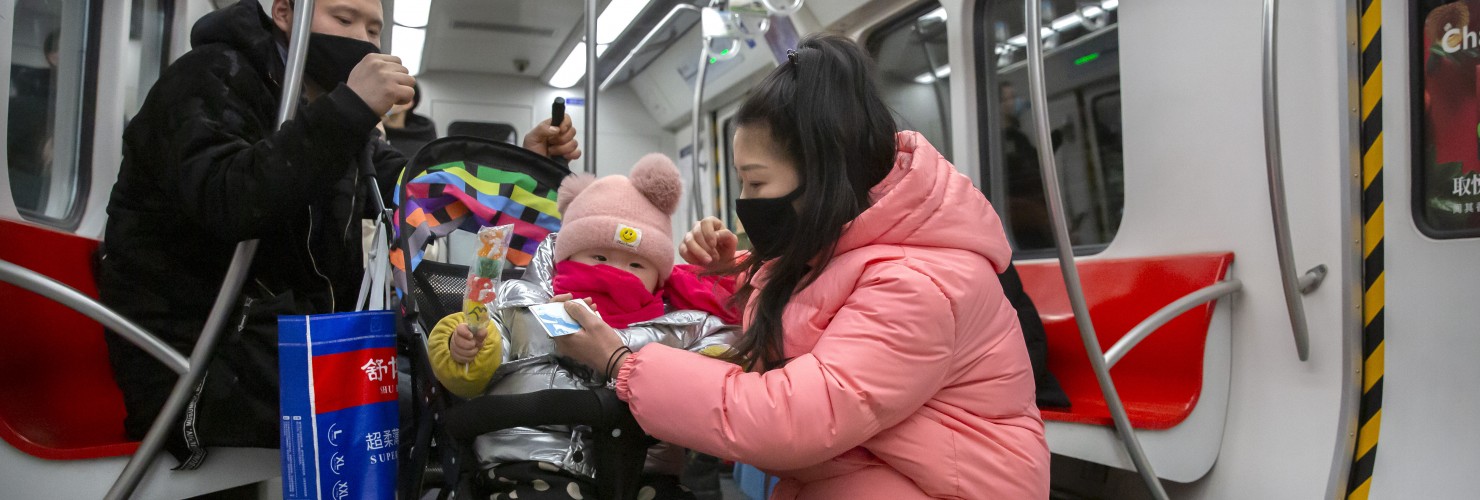

Why China’s plan to reduce abortions sparked anger and fear
Women in China are right to be anxious about the state’s newest measures on abortion. Reproductive rights are tightly bound to national priorities, while women’s rights are increasingly under attack, argues MERICS analyst Valarie Tan.
It was a short and vague guideline, buried in a wordy State Council document promising improvements to working and living conditions for women in China - “Reduce non-medically necessary abortions”. With no further details available at present, it is not clear what that guideline would mean exactly for the process of ending a pregnancy in China. The immediate response on China’s social media was, however, overwhelmingly critical. On Weibo, users lambasted the announcement, connecting it directly with state efforts to arrest China’s declining birthrates, and drawing the bleak implication that women will find it increasingly difficult to get an abortion from now on.
Those concerns stem from a deep distrust of local government officials authorized to surveil the women under their watch. Pressured to meet targets and bring down births under the draconian one-child policy, local family planning authorities in rural towns and villages were known to have hunted down thousands of pregnant women and coerced them into abortions and sterilizations against their will. In one city in Shandong, in northeast China, 7,000 people were sterilized over six months in 2005 according to civil-rights campaigners. Those who resisted were beaten and had their homes raided or even flattened.
There were also cases of officials extorting exorbitant fines from families for “illegal” births. Few, if any of these officials were ever taken to task for their actions. In 2012, two were fired and a handful of others were warned in Shaanxi province, but only after the brutal termination of a woman’s full-term seven-month pregnancy went viral online.
National priorities trump women’s rights
From the stringent one-child policy to the expanded three-child policy, women’s reproductive rights in China have been tightly bound to national priorities.
Today, the country faces a looming demographic crisis, with annual birth rates falling for four consecutive years. In 2020, there were just 12 million babies born – the lowest number since the Great Chinese Famine.
After China announced its three-child policy earlier this year, several cities have rolled out incentives to encourage women to have more babies. Families with two children or more will be given priority to rent subsidized flats in a district in Beijing. A county in Gansu has offered for couples who have two or more kids. A village in Guangdong will give cash handouts totaling USD 15,000 for each baby born after September.
Too many hurdles, too little support
It is true that China has one of the highest abortion rates in the world. But the reasons for these numbers reveal the lack of sex education and access to contraception. China’s National Health Commission confirmed in 2018 that a large majority of terminations were carried out on unwanted pregnancies in young single women who had inadequate knowledge of proper birth control and no access to effective contraceptives. The lack of a national relationship and sex education curriculum has also resulted in a poor understanding of consent amongst students in China.
It is also true that the guideline is not new. The state document from the previous two decades carried a similar directive. In the most recent document, the guideline is also accompanied by promises by the government to improve women’s access to contraceptives to prevent unplanned pregnancies. In general, such initiatives along with the ban on forced terminations and the reduction of repeated abortions are positive goals to set in the name of improving women’s healthcare in China.
But there is evidence to suggest that local governments might prioritize other goals. Since China abolished its one-child policy in 2016, at least one province has reportedly tightened its abortion rules. To terminate pregnancies after 14 weeks, women in Jiangxi province must prove that there are medical grounds for doing so, with certificates of diagnosis from three different doctors.
While the measures are also aimed at preventing gender-selective abortions, they nevertheless add to the bureaucratic burden. Restricted from legitimate means, those desperate may be forced to resort to black market abortion clinics, where the methods are unauthorized and dangerous.
Women’s rights are deteriorating
Looking at the wider context of women’s rights in China, it is clear that these fears are justified. Recent developments indicate that institutional support continues to be lacking for women in China who are victims of sexism and sexual harassment in the workplace. Two high-profile sexual harassment cases were discharged and dismissed by the authorities for lack of evidence from the victims. A #metoo activist and journalist, Sophia Huang, was reported missing and then later confirmed to be detained by police on unspecified charges. Last year, China mandated a 30-day cooling-off period for couples seeking a divorce.
Should nudges such as baby bonuses, housing subsidies or extended maternity leave fail to reverse the country’s declining birthrate, there are good reasons to worry about how this vaguely worded guideline could be interpreted. At worst, should family planning officers come under pressure to meet hard policy targets, it could well be abused by local authorities to resort to drastic measures like restricting women’s access to abortions.
